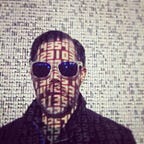A Global Challenge to Create an Immersive Dinner Party with Frankenstein + AI
--
Over the course of five days (October 23rd to October 27th) teams from around the world will work to design an immersive experience that combines storytelling, food, conversation and artificial intelligence. Each team will be challenged to produce an immersive dinner party that surfaces fears and hopes from its guests. A custom Frankenstein AI will join the party interacting with guests by prompting and observing them in an attempt to understand what it means to be human. The harvested data from dinner parties around the world will be feed to Frankenstein AI so that the machine can craft a series of ghost stories in celebration of the 200th Anniversary of Mary Shelley’s Frankenstein.
Why a ghost story?
“The circumstances that gave birth to Mary Shelley’s novel Frankenstein (1818) read like something from a Gothic story in themselves. Mary’s unconventional life up to the summer of 1816 (when she was still only 18), along with the company in which she found herself in June of that year — and even the unusual weather conditions at the time — all contributed to the book’s genesis. The vital spark that gave the novel life however was Lord Byron’s suggestion one evening at the Villa Diodati, as candlelight flickered within the house and lightning flashed across the surface of the lake outside, that those present should turn their hands to the writing of ghost stories. It was a casual ploy to while away a few hours in an atmosphere of delicious fear, but it resulted in two iconic tales: Mary Shelley’s Frankenstein, a story of scientific transgression and a cautionary warning about the need to take responsibility for one’s actions; and John Polidori’s The Vampyre, a tale which influenced Bram Stoker’s novel Dracula”. — read more
“It is true, we shall be monsters, cut off from all the world; but on that account we shall be more attached to one another.” ― Mary Shelley, Frankenstein
Building upon the success of Columbia University School of the Arts’ Digital Storytelling Lab’s Sherlock Holmes & the Internet of Things which had over 2,600 collaborators from 60 countries and a 180+ self-organized events staged around the world, we now turn our focus to Mary Shelley’s Frankenstein. Over the next two years Frankenstein AI: a monster made by many will evolve through a series of activations and experiences both online and off, that will traverse immersive theatre, browser-based interactions, community design, and other performative and experiential media.
This is a unique opportunity to…
- Collaborate with an AI to shape a series of ghost stories
- Take part in a massive dinner party
- Meet collaborators from around the world
- Explore new forms and functions of storytelling
- Experiment with methods that the Columbia DSL uses to craft immersive storytelling experiences
Timeline
August 9th
Applications open
October 12th
Applications close
October 16th
Notification of acceptance + Challenge materials released
October 22nd
Immersive Dinner Party Challenge starts
October 27th
Immersive Dinner Parties are staged around the world
October 31st
The first series of AI crafted ghost stories are released
REGISTER NOW
Read full details on how the Dinner with Frankenstein AI challenge works.
ABOUT: Frankenstein AI: a monster made by many
Marking the 200th anniversary of the publication of Mary Shelley’s seminal work, Frankenstein AI: a monster made by many reimagines the Frankenstein narrative, recasting Shelley’s creature as a naive, emotionally aware, and highly intelligent “life form” — an artificial intelligence.
A multi-year research project, Frankenstein AI challenges commonly dystopian narratives around artificial intelligence, and seeks to provoke and broaden conversation around the trajectory of this rapidly emerging technology.
Beginning with the Sundance Film Festival this past January and over the course of next two years, we’ll invite the public into our process as collaborators through an evolving series of activations and experiences both online and off, that will traverse immersive theatre, browser-based interactions, community design, and other performative and experiential media.
Checkout the first iteration of Frankenstein AI @ Sundance
ABOUT: Columbia DSL
The Columbia University School of the Arts’ Digital Storytelling Lab (aka Columbia DSL) designs stories for the 21st Century. We build on a diverse range of creative and research practices originating in fields from the arts, humanities and technology. But we never lose sight of the power of a good story. Technology, as a creative partner, has always shaped the ways in which stories are found and told. In the 21st Century, for example, the mass democratization of creative tools — code, data and algorithms — have changed the relationship between creator and audience. The Columbia DSL, therefore, is a place of speculation, of creativity, and of collaboration between students and faculty from across the University. New stories are told here in new and unexpected ways.
